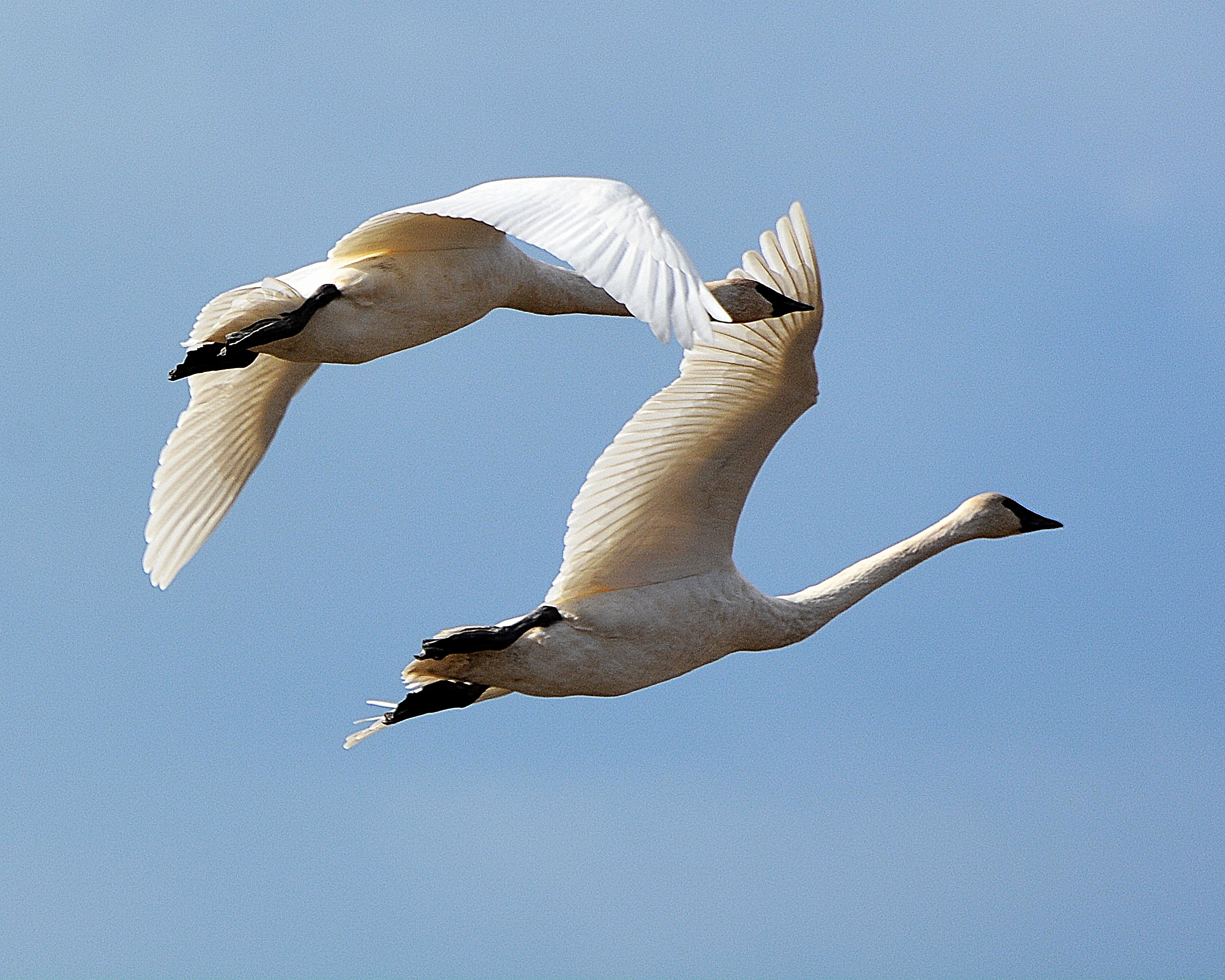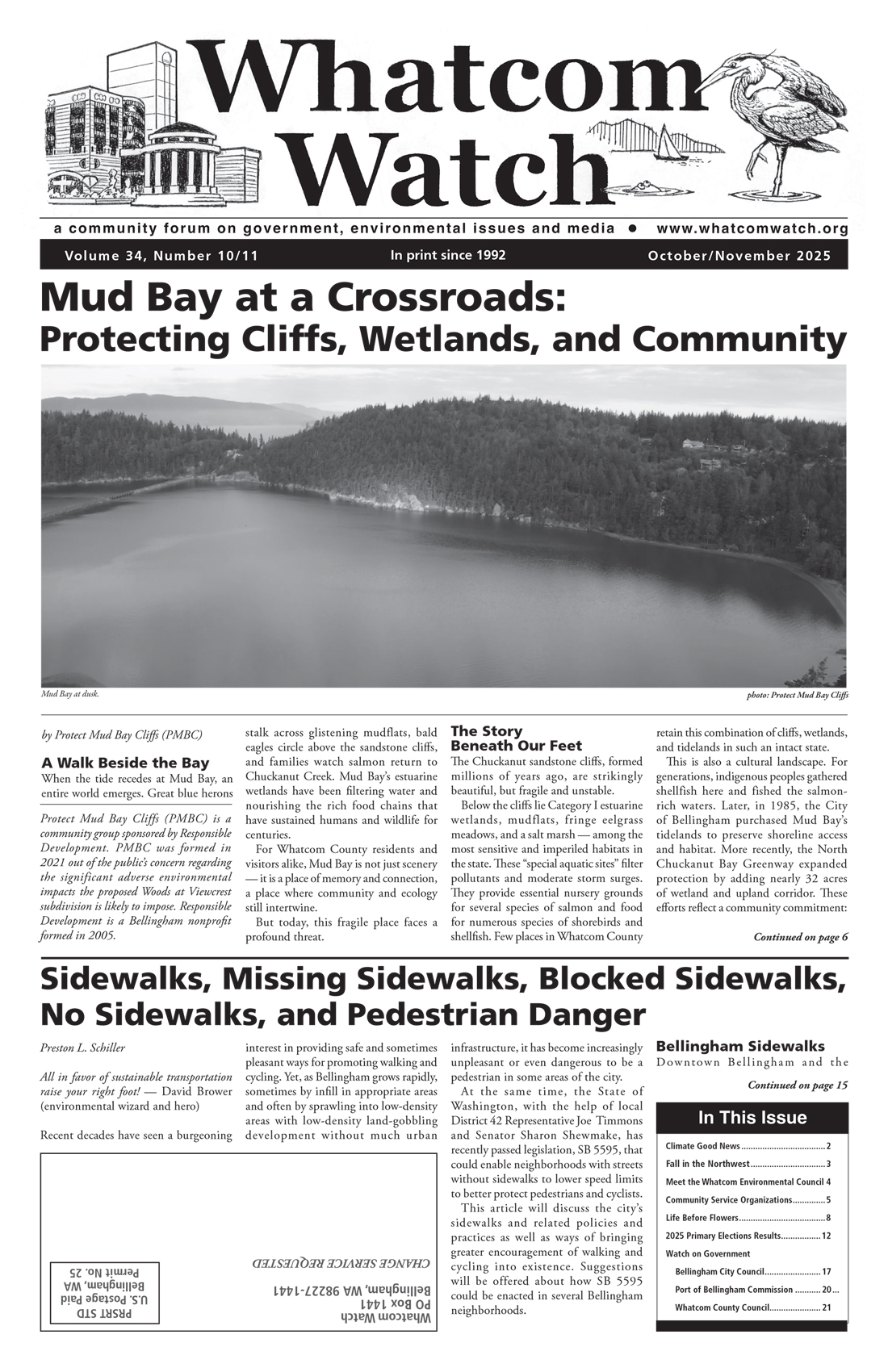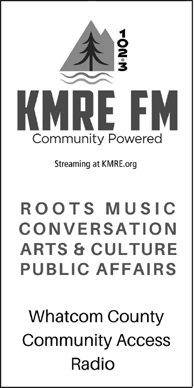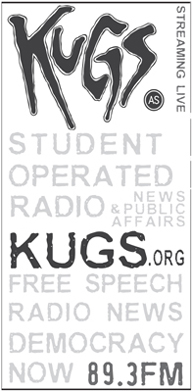Beaks and Bills
Time of Arrivals and Departures
by Joe Meche
When I was growing up in southwest Louisiana, summertime was day after day of heat and humidity and we always looked forward to the first days of fall. I have vivid memories of widespread rejoicing from all ages in late September when we had made it through another summer. As kids, we were excited on the first cool mornings when mom said we had to wear a jacket to school … the same jacket we hadn’t seen since March! Of course, the jacket you wore to school in the morning was excess baggage that you had to drag home in the afternoon. But still, the seasonal shift was there and we felt it.

photo: Joe Meche
Trumpeter swans
I still have the same feeling of excitement when the autumnal equinox arrives all these years later. Even though heat and humidity are not generally a factor in the Pacific Northwest, I’m just happy to leave my least favorite season behind. After almost 50 years here, I’m perfectly acclimated to our more moderate marine climate. The temperature change in late September is notable with foggy mornings, along with the noticeably shorter days and the changing colors across the landscape. At this point, I’m ready to don long pants and a favorite old jacket to greet the day with my eyes and ears open for the changing birdscape.
Already, in the last week of September, I’ve heard early flocks of cackling geese above Larrabee State Park on two occasions. Interestingly enough, the first flocks of migratory waterfowl always seem to be a bit on the early side. This always brings up conversations about the weather conditions on the birds’ respective breeding grounds farther north. From the expansive bays on the Canadian border to the open and mostly harvested agricultural fields of the Samish Flats, birders know that the best time of year is upon us.
The Semiahmoo Spit is already providing a textbook example of the avian movements that happen like clockwork every year. It’s no secret that I always recommend this area as the best birding location in Whatcom County, if not the entire state. If you’ve been there lately, you know that the purple martins have already left their nesting boxes at Tongue Point and begun their southward movement, following the flying insects that are their main prey.
While the martins and other migratory species that depend of insects will have left us, the loons and grebes have already returned from their northern and eastern breeding grounds on freshwater lakes and ponds. It truly is magical that birds know precisely when to head toward ice-free zones for the winter months. During nesting season, we’ve paddled with common loons and red-necked grebes in the high Okanogan of northeastern Washington. We’ve seen them as they tend to eggs and eventually raise their young. When the young birds are capable of extended flight, nature calls and they head for the protected and food-rich sheltered coves and inlets like Drayton Harbor. They stay with us through the colder months and reverse the process in spring. Avian migration will always be magic to me.
The current and expected shorebird bonanza is in full swing at Semiahmoo right now. As many as 1,000 black-bellied plovers crowd the bayside beaches between the resort and the neck of the spit. This is always a good time of year to carefully scan the flocks of plovers for accompanying species like marbled godwits, whimbrels, and willets. Often hidden in the mix are smaller shorebirds like sanderlings, western sandpipers, black turnstones, dowitchers, and the highly sought after red knots. For an entertaining day trip, pack a lunch and grab a good spot on a beach log while you wait for the high tide to push the avian crowds closer to the backshore.
Shorebird activity really kicks into high gear when the large flocks of dunlin arrive on the scene. The numbers of this common shorebird can easily reach into the thousands and the activity attracts birds of prey like peregrine falcons and merlins. The water tower at Semiahmoo is frequently one of the preferred perches for raptors to scan the area for their next meal. Bald eagles also begin to show up in the fall and they always find relatively easy pickings in the expanse of Drayton Harbor. Red-tailed hawks come in to patrol the open fields along with northern harriers and the ever popular short-eared owls, known to many as shorties. The fans of these unique, diurnal hunters are already lining up for the first sightings. The area of the Samish Flats known as the East 90, southwest of Edison, gets to be a bit zoo-like for several months when the owls arrive in the fall.
Lest I forget, one group of birds that ties me to the past with vivid memories of sights and sounds is the large family of waterfowl … specifically the geese and swans. When I first came to Bellingham, I was delighted to see large flocks of snow geese in the area with an added bonus of two species of swans. The hundreds of thousands of snow geese that flooded the rice fields around my hometown were instrumental in the development of my passion for birds.
While their numbers on the Pacific Flyway can’t rival those of the Central and Mississippi Flyways, snow geese are still well represented in Skagit and Whatcom Counties. As I mentioned before, there are also the trumpeter and tundra swans to consider. The mere presence of these magnificent birds provides thrilling viewing experiences as they forage into the colder months in the dormant agricultural fields that might be overlooked, if that’s possible. It’s especially amazing if you’re observing large flocks of swans or geese at the moment when they all lift as one either to avoid predators or head toward the safety of lakes or saltwater for the night.
In this column, I’ve touched on just a few of the more noticeable birds that transition between here and there, as much as column space allows. However, I’d be remiss if I didn’t at least point out that we live in one of the best parts of the country for birding throughout the year. From hummingbirds to eagles and swans, we are blessed with an avian abundance. Fall has been my favorite time of year to observe birds since I was the proverbial knee-high to a great blue heron. I’ve always enjoyed being outside no matter the season. I’m well aware of what comes after the sweet transition of the seasons between September and October, but by wearing the proper clothing, I’m able to get out and avoid the onset of cabin fever.
Perhaps I’ll see you in the field … I’ll be there!
_____________________________________
Joe Meche is a past president of the North Cascades Audubon Society and was a member of the board of directors for 20 years. He has been watching birds for more than 70 years and photographing birds and landscapes for more than 50 years. He has written over 250 columns for Whatcom Watch.





























